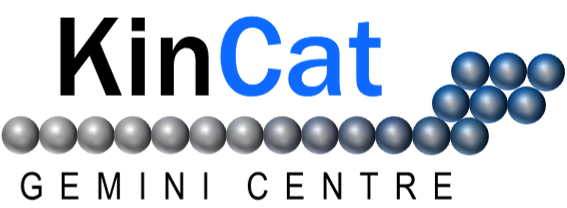The Group
Leading the Way in Catalysis Research and Education
The Catalysis Group at the Department of Chemical Engineering, NTNU, is at the forefront of research and teaching in catalysis, reaction kinetics and sustainable process industry. As the largest catalysis group in Norway, it serves as the primary arena for educating PhD and MSc candidates who will contribute to Norwegian industry and research institutes. The group focuses on investigating the structure and performance of heterogeneous catalysts with the goal of designing and producing more selective catalysts. This is achieved through the determination of structure-performance relationships. The group comprises five permanent faculty members (one currently hiring), approximately 20 PhD students, 5-10 postdoctoral fellows and educates 10-15 MSc graduates annually. Furthermore, about ten scientists and researchers from SINTEF industry work in close collaboration with the group.
A Long-lasting Strong Collaborative Effort
The KinCat Gemini Centre for Kinetics and Catalysis was established on July 1, 1998, by NTNU and SINTEF as a recognition of the strong scientific collaboration between their members. This integrated NTNU/SINTEF research laboratory allows NTNU staff to collaborate and share facilities with SINTEF Industry researchers. The centre has been formally recognized as a Gemini Centre since January 2008. Researchers from both organizations participate in theoretical studies, teaching, and research, and the group engages extensively in international networks, collaborating with universities and research groups globally. The research is funded by the Norwegian Research Council, EU, Norwegian and international industry, and other sources, covering fundamental studies to process development in small pilot plants.
The Significance of Catalysis in Industry and the Environment
Catalysis is a fundamental aspect of chemical engineering that significantly impacts both the environment and the economy. At Tjeldbergodden in Nord-Møre, for example, natural gas is converted into 900,000 tons of methanol annually, covering 8% of the European market and generating substantial revenue for Equinor. Catalysis also plays a vital role in reducing emissions. Catalytic converters in cars and trucks transform harmful gases like carbon monoxide and nitrogen oxides into less harmful substances, thereby significantly reducing pollution from gasoline and diesel engines. Novel approaches of converting chemical waste into fuels and building blocks for the chemical industry open up new pathways towards a net carbon society.
The Science Behind Catalysis
Heterogeneous catalysis operates at the interface between reactants and materials, often involving tiny particles on porous surfaces in a gas or liquid stream. Despite its significance, the precise mechanisms of catalytic processes remain only partially understood, even by experts. No comprehensive theory explains catalysis fully, making it challenging to predict outcomes with new materials. The process accelerates chemical reactions by lowering energy barriers, akin to an assistant lowering a hurdle for a high jumper. This principle is fundamental in producing various essential products, such as fuels, plastics, and fertilizers, which form about 20% of the Norwegian gross domestic product.
Future Directions and Innovations
The development of catalysis technology focuses on three main areas: discovering new catalysts, optimizing existing ones, and enhancing process selectivity to minimize byproducts. Innovations like SINTEF's multiautoclave allow simultaneous testing of multiple catalysts, speeding up the discovery process. Researchers are exploring alternatives to expensive precious metals and improving efficiency through better control of reaction conditions. Catalysis is expected to play a significant role in the green shift, particularly in hydrogen production and utilization. By developing efficient catalytic processes, hydrogen can become a viable and environmentally friendly energy carrier, contributing to a cleaner future.
The Catalysis Group has been involved in significant research initiatives, such as the Centre for Research-based Innovation (Innovative Natural Gas Processes and Products – inGAP) from 2007-2015, and the Industrial Catalysis Science and Innovation (iCSI) Centre from 2015-2023, aimed at boosting industrial innovation and providing efficient, low-emission process technology for a competitive and sustainable process industry.
The group has a close relationship with Norwegian and international industry and has collaborated in the past with numerous companies: Yara International, K.A. Rasmussen, Dynea, Equinor (and earlier Statoil), Haldor Topsøe, Quantafuel, Ineos Inovyn, Elkem, Borealis, Johnson-Matthey, Fjell Technology Group, Exxon Mobile, Norsk Hydro, ...


